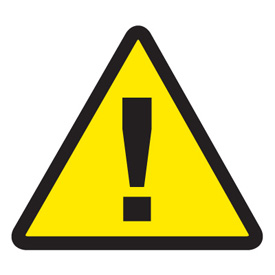News & Insights
Legal Alert

Are You Ready for the New Prop 65 Warnings? What Commercial Property Owners and Businesses Need to Understand to Be Prepared
Environmental & Natural Resources
6.20.18
As of August 30, 2018, businesses will be subject to new warning requirements under the California Safe Drinking Water and Toxic Enforcement Act (aka Prop 65). The Prop 65 regulatory amendments (Amendments), adopted in 2016 and effective August 30, 2018, provide new guidance for providing both generic and tailored warnings for various types of chemical exposures. The Amendments will significantly change the warnings already required at many commercial establishments such as multi-tenant commercial office buildings, restaurants, hotels, parking lots, industrial facilities, and vehicle repair and service stations. Recently proposed regulations may soon require specific warnings for rental properties as well.
What is Prop 65?
Prop 65 is a California "right-to-know" law that prohibits businesses with 10 or more employees from "knowingly and intentionally" exposing individuals to any of the more than 800 chemicals known to the State of California (State) to cause cancer and/or birth defects or other reproductive harm (Listed Chemicals) without providing them with "clear and reasonable" warnings. Although Prop 65 "safe harbor" regulations have long provided guidance on the content and method of displaying Prop 65 warnings, the Amendments modify required language and add regulations for warnings in specific industries and for certain products.
Existing Regulations
As with the previous regulations, the Amendments address the following basic exposure scenarios—(1) "consumer product exposures," meaning those associated with the intended use of consumer products; (2) "environmental exposures," meaning either community-wide exposures to emissions from industrial sources or limited exposures that occur within confined spaces; and (3) "occupational exposures," meaning employee exposures to chemicals present in workplaces. Previously, these warnings could be provided using the general language "WARNING: This product contains a chemical known to the State of California to cause [cancer and/or birth defects or other reproductive harm]."
New Warning Requirements
The new regulations continue to provide guidance on warnings for consumer product exposures, environmental exposures, and occupational exposures. In addition, the Amendments add new guidance for exposures arising from a number of specific products and industries. Many of the Amendments are likely to affect commercial property owners and businesses, including the following: alcoholic beverages, food and non-alcoholic beverages in restaurants, enclosed parking facilities, industrial facilities, service stations and vehicle repair stations, designated smoking areas, and hotels.
The Amendments increase the specificity both as to content and method of delivery required to meet the Prop 65 warning requirement. With some exceptions, the Amendments require the following for a warning posted by a covered business:
- Identify at least one of the specific Listed Chemical(s) in each risk category—i.e. carcinogen or reproductive toxicant—which has triggered the need for a warning;
- Use specific language to identify the source of the exposure based on the type of Listed Chemical(s);
- Provide a link to a State webpage to obtain additional relevant Prop 65 information; and
- Employ the
 symbol at the start of the warning sign.
symbol at the start of the warning sign.
For example, environmental exposures to chemicals which are listed as both carcinogens and reproductive toxicants require the following warning text:
"![]() WARNING: Entering this area can expose you to chemicals known to the State of California to cause cancer and birth defects or other reproductive harm, including [name of one or more Listed Chemical(s)], from [name of one or more sources of exposure]. For more information go to www.P65warnings.ca.gov."
WARNING: Entering this area can expose you to chemicals known to the State of California to cause cancer and birth defects or other reproductive harm, including [name of one or more Listed Chemical(s)], from [name of one or more sources of exposure]. For more information go to www.P65warnings.ca.gov."
For many types of exposures, the new regulations also identify methods in which a warning may be delivered, mandate specific font sizes to be used, require "conspicuous" signage and warnings so that individuals see and read the warnings prior to purchase or use of the relevant area, and specify that warnings must also be provided in non-English languages if another language is used for product information or signs.
The following is a list of warning regulations most likely to impact owners of commercial real estate and businesses open to the public. For information on specific language and delivery methods, you can access the text of OEHHA's new regulations.
- Environmental exposure warnings (new Sections 25604 and 25605): These apply to indoor or outdoor exposures which are not occupational in nature and do not arise from the use of consumer products exposures (and which are not covered by one of the tailored warnings below). Warnings are required at all public entrances.
- Occupational exposure warnings (new Section 25606): Under the new regulations, warnings will be deemed "clear and reasonable" if they comply with requirements of the federal OSHA HazComm Standard, if covered by the Standard. If not, a warning must comply with other Prop 65 warning regulations.
- Alcoholic beverage exposure warnings (new Sections 25607.3 and 25607.4): The Amendments identify potential risks of cancer and birth defects caused by alcohol consumption. There are several permissible methods of delivering these warnings. For alcoholic beverages consumed on the premises of a commercial establishment, warnings may be provided on alcoholic beverage list or menus.
- Food and non-alcoholic beverage exposure warnings in restaurants (new Sections 25607.5 and 24607.6): The new guidance identifies potential exposures to Listed Chemicals arising from food and beverage consumption, such as acrylamide in fried or baked foods and mercury in fish. Restaurants can provide the warnings in one of several specified methods.
- Enclosed parking facility engine exhaust exposure warnings (new Sections 25607.20 and 25607.21): The Amendments provide standard language about potential exposures to chemicals such as carbon monoxide and diesel engine exhaust, which may cause cancer or reproductive harm. These should be posted at each public entrance.
- Petroleum product exposure warnings (new Sections 25607.24 and 25607.25): For petroleum exposures from industrial operations and facilities, other than service stations or repair facilities, the regulations specify language regarding potential exposures arising from the use of petroleum products. These should be displayed in accordance with environmental exposure warning guidance.
- Service stations and vehicle repairs (new Section 25607.26 and 25607.27): Service stations and vehicle repair shops will need to provide warnings based on potential exposures to chemicals arising from petroleum products. Warnings at service stations should be provided at gas pumps, and warnings at repair shops should be posted at entrances.
- Designated smoking area exposure warnings (new Sections 25607.28 and 25607.29): Smoking areas will need to provide warnings regarding exposures to tobacco smoke and nicotine at entrances and within the smoking area itself.
- Hotel exposure warnings (new Sections 25067.32 and 25607.33): This applies to exposures within any transient lodging, such as hotels, motels, bed and breakfasts, resorts, space, tourist homes, timeshares, condominiums, vacation rentals, and extended stay establishments. Hotel warnings require specificity as to the Listed Chemical(s), the potential effects of such exposure(s), and the source of the exposure(s). These must be provided at registration or check-in.
In addition to these tailored warnings, the Amendments provide for revised consumer product warnings (when a tailored warning does not apply), as well as specific warnings for other exposures from furniture, prescription drug and medical or dental care, wood dust, diesel engines, vehicles, and recreational vessels.
Burden on Retail Sellers
The new regulations also attempt to shift the burden of providing warnings away from retail sellers and towards manufacturers and distributors. Specifically, under the Amendments a manufacturer or distributor has two options when a Prop 65 warning is required: (1) label the product, or (2) provide a written notice to an "authorized agent" of a retail seller. The notice—which must be renewed annually or updated within 90 days when a new or different chemical is identified—has to identify the Listed Chemical(s), include the exact product information, include the required warning materials to be used, and be sent by the manufacturer or distributor with confirmation of receipt. Under the revised regulations, retail sellers are only primarily responsible in certain limited circumstances, including but not limited to if the retail seller sells the product under its brand or trademark or introduces a Listed Chemical to a product.
Proposed Regulations for Apartments
On February 23, 2018, OEHHA proposed additional warnings for residential rental properties— property rented by a landlord, such as apartments, duplexes, condos, and rental houses. The public comment period ended on April 16.
The new regulations, if passed, will require that landlords provide a warning when an adult tenant enters into a lease, and an annual notice to all adult occupants of the property. Like the tailored warnings described above, proposed warning language for rental properties would require the Listed Chemical(s), the warning symbol, and an invitation to speak with a landlord or building owner. View the proposed regulations.
Conclusion
Prop 65 imposes fines of up to $2,500 per day per violation. It also allows private parties to bring enforcement actions on behalf of the State of California whenever they believe a violation has occurred, and recover their attorney's fees as part of a settlement or if successful in a lawsuit. Over the last several decades, private enforcement has expanded into a multi-million dollar enterprise. Commercial property owners and businesses should take steps now to ensure that their Prop. 65 warnings comply with the new warning requirements by August 30, 2018.
For general information on Prop 65, go to OEHHA's Prop 65 website. View a side-by-side comparison of the old and new Prop 65 regulations.
Author
Partner
RELATED SERVICES
Allen Matkins Leck Gamble Mallory & Natsis LLP. All Rights Reserved.
This publication is made available by Allen Matkins Leck Gamble Mallory & Natsis LLP for educational purposes only to convey general information and a general understanding of the law, not to provide specific legal advice. By using this website you acknowledge there is no attorney client relationship between you and Allen Matkins Leck Gamble Mallory & Natsis LLP. This publication should not be used as a substitute for competent legal advice from a licensed professional attorney applied to your circumstances. Attorney advertising. Prior results do not guarantee a similar outcome. Full Disclaimer


